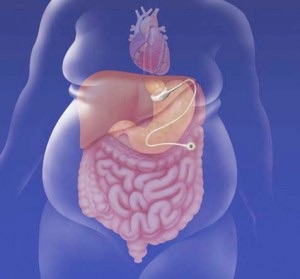Why the Adjustable Gastric Lapband?
Life Change or No Change
So, here’s the bad news. The only way to be a thinner person is to eat less and exercise more -- for the rest of my life. The lapband is not a magic fix (nor is the gastric bypass). I will have to change what I eat, how much I eat, and how I spend my time. I will no longer be able to binge on ice cream or potato chips whenever I feel lonely or depressed. Truth.
When I was 16 years old, I wore a size 16 and it’s been an up-and-down struggle for 50 years. Every diet imaginable, 13 years on the diet drugs fen-phen, and I ended up weighing 311 pounds and wearing a size 32. As I entered retirement from a 30-year teaching career, I asked myself the famous Dr. Phil question, “How’s that working for you?”
It wasn’t.



Not only was I morbidly obese; I had so many co-morbidities (type II diabetes, coronary blockages, tachycardia, high blood pressure, high cholesterol, sleep apnea, asthma, and osteoarthritis) that I had multiple-choices for death.
The teacher had to learn.
I would not have undertaken weight loss surgery for cosmetic reasons. I believe I had my own kind of beauty and my husband loved me however I looked. I knew that my weight put me at a significantly greater risk of death than the risk of weight loss surgery
After extensive research, therapy, and attending weight loss support groups, I chose to have the adjustable lapband surgery, not the “usual” weight loss surgery. It is less risky than gastric bypass, because it does not involve cutting the stomach. It is slower, averaging 5-10 pounds a month. It is healthier because nutrition comes from real food, not supplements. The lapband dims my appetite so I can practice portion control and make wiser choices. Because it is adjustable, I have confidence that I won’t gain the weight I lose back.
For 56 years, I stopped eating because my plate was empty, not because I was full. I didn’t even recognize the signals my body sent me.



Blindness, certainly a common complication from diabetes and high blood pressure, is my greatest health fear. My mother, like her mother and grandmother before her, went blind several years before she died. My eye doctor told me that the best thing I could do to preserve my eyesight was to quit smoking and to control my hypertension and diabetes. I immediately took steps to successfully quit smoking. The lapband has finally helped me control both blood pressure and blood sugar.
Fifteen years after surgery, I can fit my 170 pounds into a size 12. Hypertension and diabetes are controlled by significantly lesser medication -- and the other co-morbidities are gone. Even these last two may yet be cured. As I pass 67, I have retired after teaching five years in Europe, exercise four times a week, spent my summers in Italy and Costa Rica, and plan for my future.
